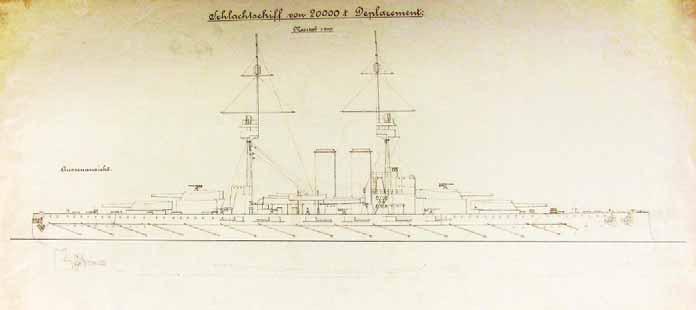the imperial (and) royal navy
As a land power in the first place, the Habsburg Empire had no permanent navy before the end of the eighteenth century. The predecessor of the Navy was established in Trieste in 1786 by Emperor Joseph II. When Austria took possession of Venice, Dalmatia and Istria in 1797, on the basis of the former Venetian Navy was established the Imperial-Royal Navy (kaiserlich-königlich Kriegsmarine). Its name was changed to Imperial and Royal Navy (kaiserlich und königlich Kriegsmarine, császári és királyi haditengerészet) in 1889. The Habsburg rulers and the state bureaucracy traditionally had little interest in or understanding of the significance of sea power for the Empire. This was one of the main reasons for the slow development and the underfinanced state of the Austrian (after the Compromise between Austria and Hungary of 1867 Austro-Hungarian) Navy during the nineteenth century. In the greatest part of its history, the Navy was the “stepson” of the Habsburg armed forces, no more than a mere coastal defense force. In the history of the Austro-Hungarian Navy there were two great periods of development. The first period began in 1850, after the shock of the Revolution of 1848. The tempo of the development accelerated under the command of Archduke Ferdinand Max (1854-1864), younger brother of Franz Joseph, the ill-fated later Emperor of Mexico (1864-1867). This period culminated in an ironclad naval arms race with the eternal rival Italy and in the victory over the Italian fleet at Lissa in 1866. After the death of Wilhelm von Tegetthoff in 1871, the greatest Austro-Hungarian naval hero, the victor of Lissa, who was the commander of the Navy from 1868, it began a long period of stagnation and frustration again. After more than two decades of stagnation the new period of development began in the 1890s. External and internal factors as well played significant role in the development of the Austro-Hungarian Navy in this period. In the age of navalism the sea power became more and more important and even a land power, the Austro-Hungarian Monarchy had to follow the international trend. It
was an important factor too, that the formal ally of the Dual Monarchy the eternal rival Italy, after its defeat at Adua (1896) turned to the eastern Adriatic again, with the claim of unify the Italians living in the Austro-Hungarian Monarchy with the kinsman in the Kingdom of Italy. The Russo-Japanese war intensified the Austro-Hungarian fears of an Italian assault on the Adriatic coastline. The domestic factors also helped the development of the Austro-Hungarian Navy. The emerging new political parties in Austria had a pro-navy sentiment and thanks to the growing domestic industrial orders the representatives of the heavy industry became friends of the Navy. And one of the most important things: the new heir of the throne Archduke Franz Ferdinand became the patron of the Navy. The intensive development began in 1904. The budget of the navy increased nearly by 400 percent between 1904 and 1914, while the Navy’s quota in the defense budget grew from 7 to 25 percent. This period culminated in a dreadnought naval arms race with Italy. Austria took possession its first territory on the Adriatic coast, the city of Trieste in 1382. The Kingdom of Hungary after seizing the Croatian throne reached the Adriatic in 1102. In 1526, after the catastrophic Hungarian defeat by the Turks at the Battle of Mohács the Austrian Habsburgs seized the Hungarian and the Croatian thrones, and the two countries became parts of the Habsburg Empire. In the period of the long wars with the Turks, who possessed the central part of Hungary, the Habsburg rulers were less interested in maritime affairs. They began to show some interest to the sea power only in the 18th century. Two short lived initiatives to establish a navy took place under Emperor Karl VI and later under Empress Maria Theresia, but until the end of this century Venice dominated almost the entire eastern coastline of the Adriatic. The permanent navy, with two small ships was finally established in 1786 in Trieste. In 1797 Venice, the “queen of the seas” was conquered by Napoleon, who deliv-






























